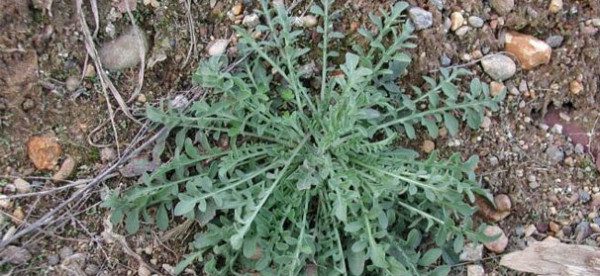May 23, 2017Most common weeds in broadleaf, specialty crops listed
A recent survey conducted by the Weed Science Society of America (WSSA) ranks Palmer amaranth as the most troublesome and difficult to control weed in 12 categories of broadleaf crops, fruits and vegetables, while common lambsquarters ranks as the weed most commonly found.
According to a news release, almost 200 weed scientists across the U.S. and Canada participated in the 2016 survey, the second conducted by WSSA. A 2015 baseline survey explored the most common and troublesome weeds in 26 different crops and noncrop areas.
The current survey ranks the following weeds as the most troublesome or the most common among broadleaf crops, fruits and vegetables:
|
TOP 10 WEEDS IN BROADLEAF CROPS, FRUITS & VEGETABLES |
|||
|
Most Troublesome |
Most Common |
||
|
1 |
Palmer amaranth |
1 |
common lambsquarters |
|
2 |
common lambsquarters |
2 |
foxtail (giant, green, yellow) |
|
3 |
horseweed (marestail) |
3 |
morningglory (ivyleaf, pitted, tall) |
|
4 |
morningglory (ivyleaf, pitted, tall) |
4 |
Palmer amaranth |
|
5 |
waterhemp (tall, common) |
5 |
redroot pigweed |
|
6 |
nutsedge (yellow, purple) |
6 |
waterhemp (tall, common) |
|
7 |
kochia |
7 |
horseweed (marestail) |
|
8 |
common ragweed |
8 |
common ragweed |
|
9 |
giant ragweed |
9 |
barnyardgrass |
|
10 |
nightshade (eastern black, hairy) |
10 |
velvetleaf |
Six weed species appeared on both the “most troublesome” and “most common” lists, including Palmer amaranth, common lambsquarters, horseweed, morningglory, waterhemp and common ragweed.
“Weed scientists have confirmed multiple cases of herbicide resistance in all six of these weed species, except for the morningglories where there is suspected resistance to glyphosate,” says Lee Van Wychen, Ph.D., science policy director for WSSA. “While each of these species has evolved traits that make them widespread and tough competitors in broadleaf crops like soybeans and cotton, there is no question that their difficulty to control with herbicides has pushed them to the top of the list in this survey.”
WSSA also sorted the survey data to produce the following crop-specific results:
|
BROADLEAF CROP |
MOST TROUBLESOME WEED |
MOST COMMON WEED |
|
alfalfa |
Canada thistle |
dandelion |
|
canola |
kochia |
wild oat |
|
cotton |
Palmer amaranth |
morningglory (ivyleaf, pitted, tall) |
|
fruits & nuts |
field bindweed |
horseweed (marestail) |
|
peanuts |
nutsedge (yellow, purple) |
Palmer amaranth |
|
pulse crops |
common lambsquarters |
common lambsquarters |
|
soybeans |
horseweed, waterhemp (tall, common) |
waterhemp (tall, common) |
|
sugar beets |
common lambsquarters |
common lambsquarters |
|
vegetables |
nutsedge (yellow, purple) |
common lambsquarters |
Although listed as the most troublesome weed in cotton only, Palmer amaranth was ranked first in the overall survey based on the number of respondents who cited it as a problem. Common lambsquarters is widely distributed across the northern half of the United States and southern Canada. It is not surprising that it ranked as the most common weed in sugar beets, vegetable crops and pulse crops, such as dry edible beans, lentils and chickpeas.
WSSA plans to conduct habitat-specific weed surveys annually. The 2017 survey will focus on weeds in grass crops, pasture and turf, while the 2018 survey will focus on weeds in aquatic environments, natural areas and other noncrop settings.
The 2016 survey data is posted online at http://wssa.net/wssa/weed/surveys. For more information specific to herbicide-resistant weeds, see the International Survey of Herbicide Resistant Weeds, available at http://weedscience.com.















